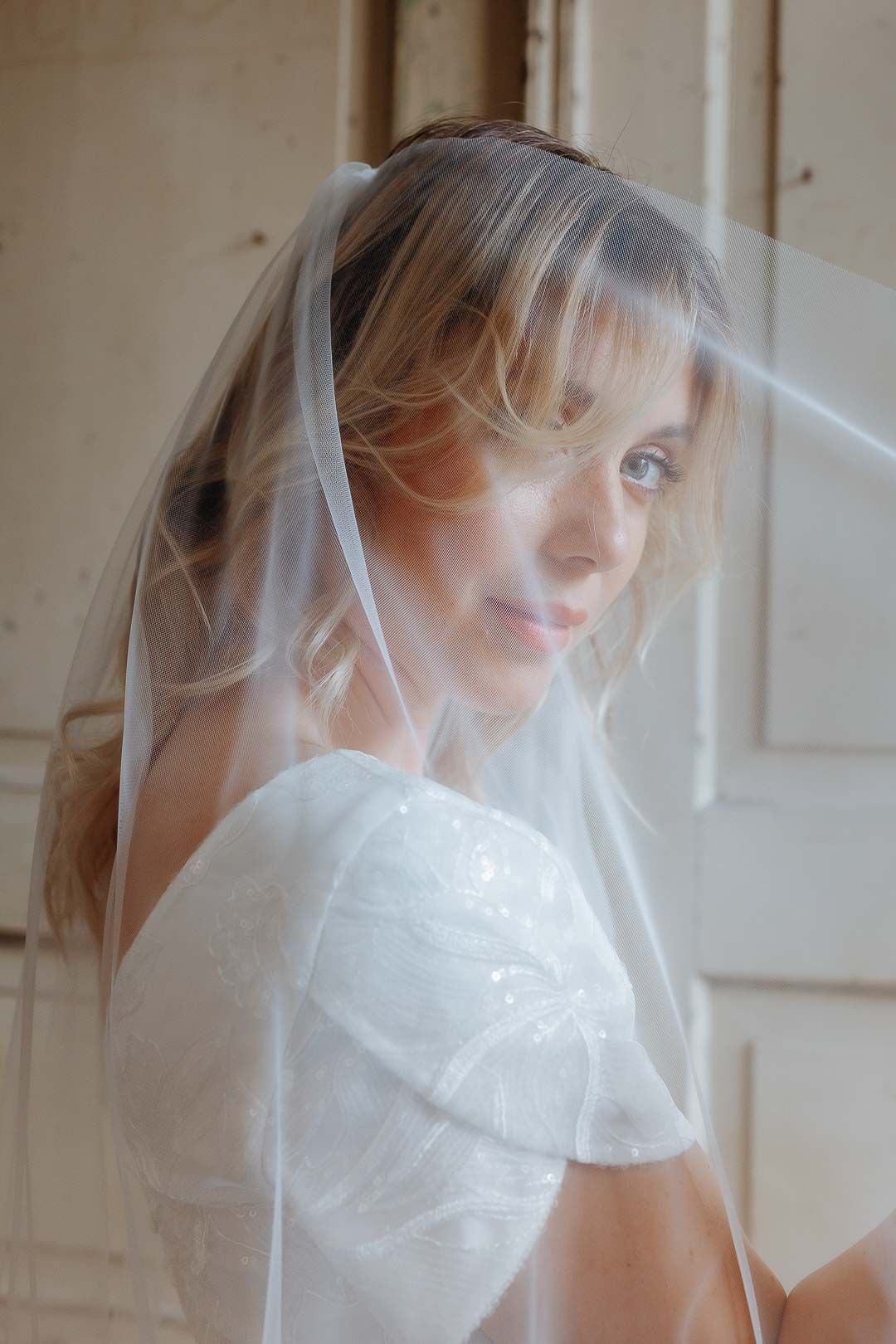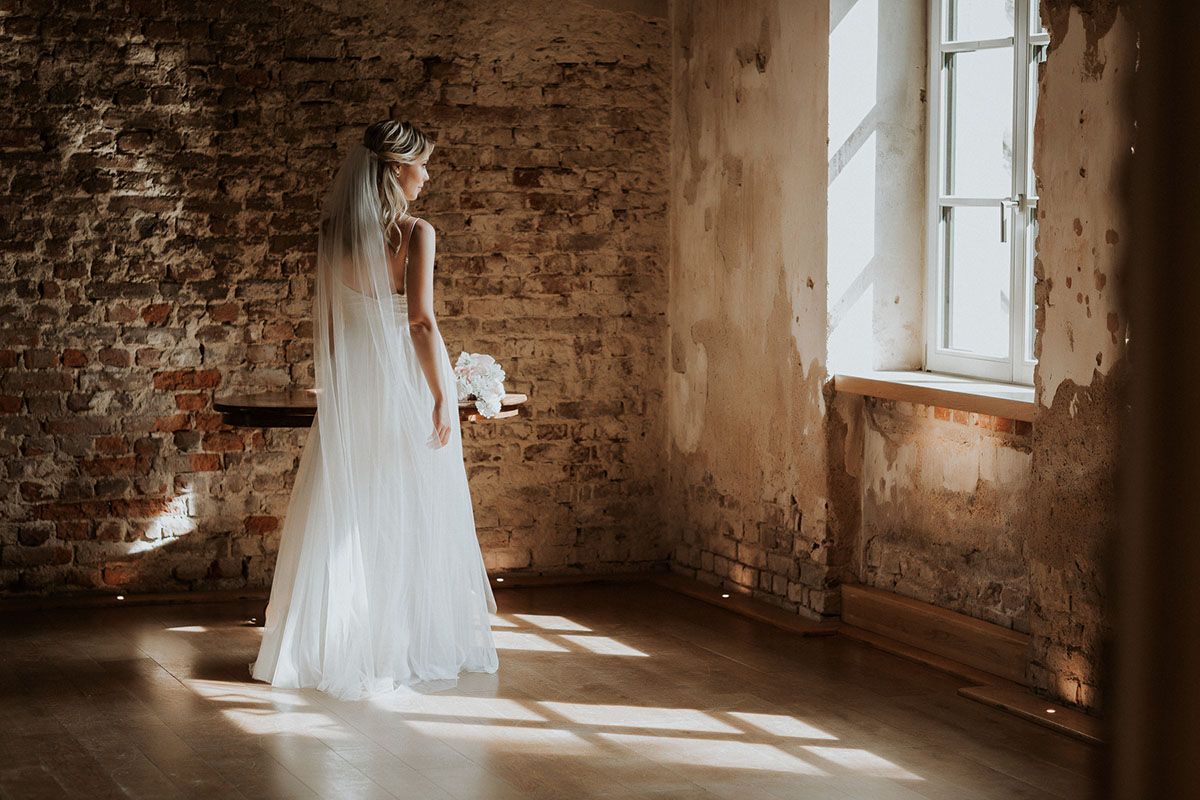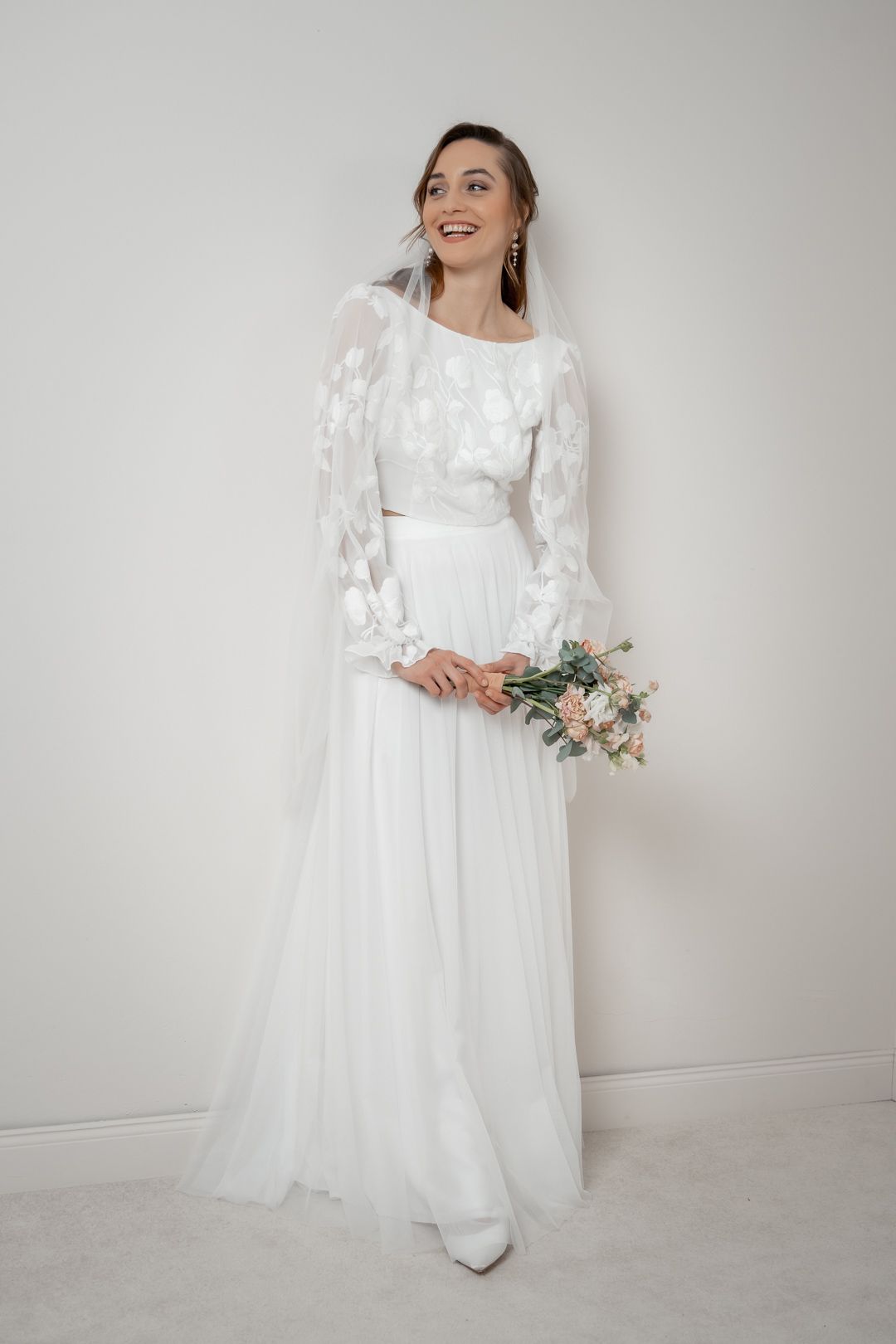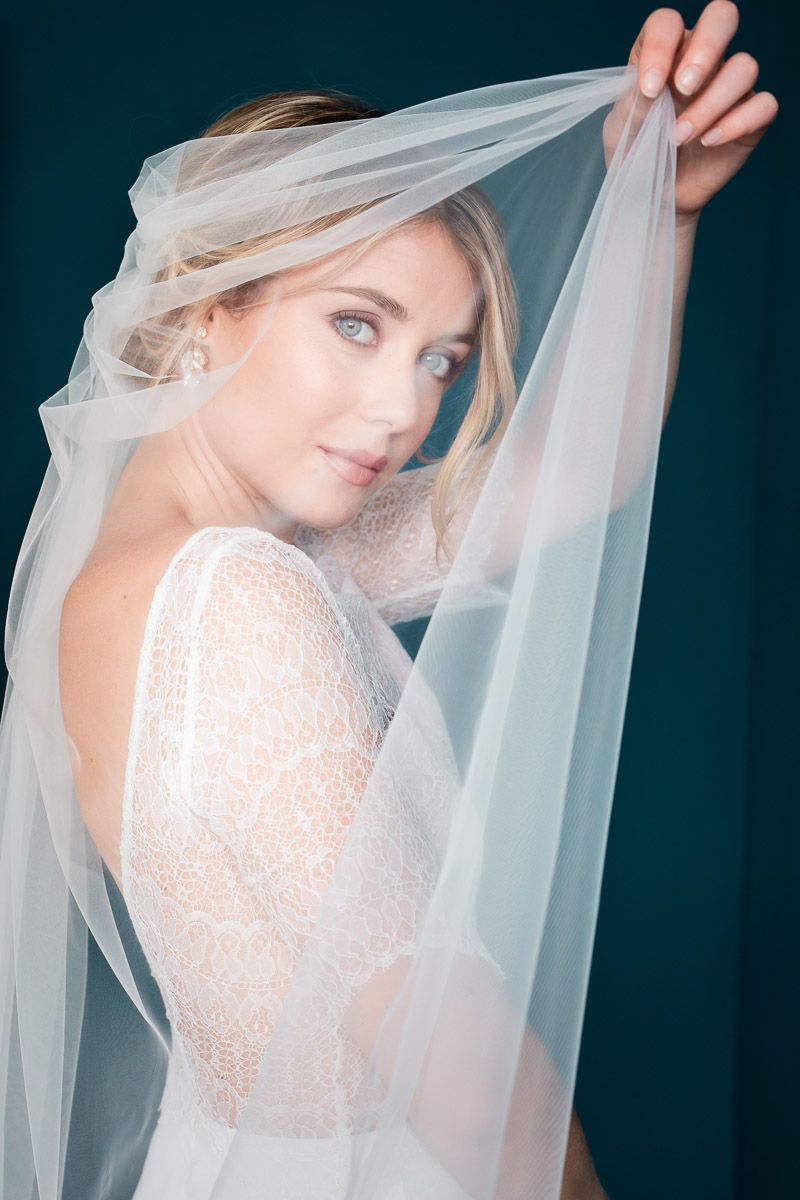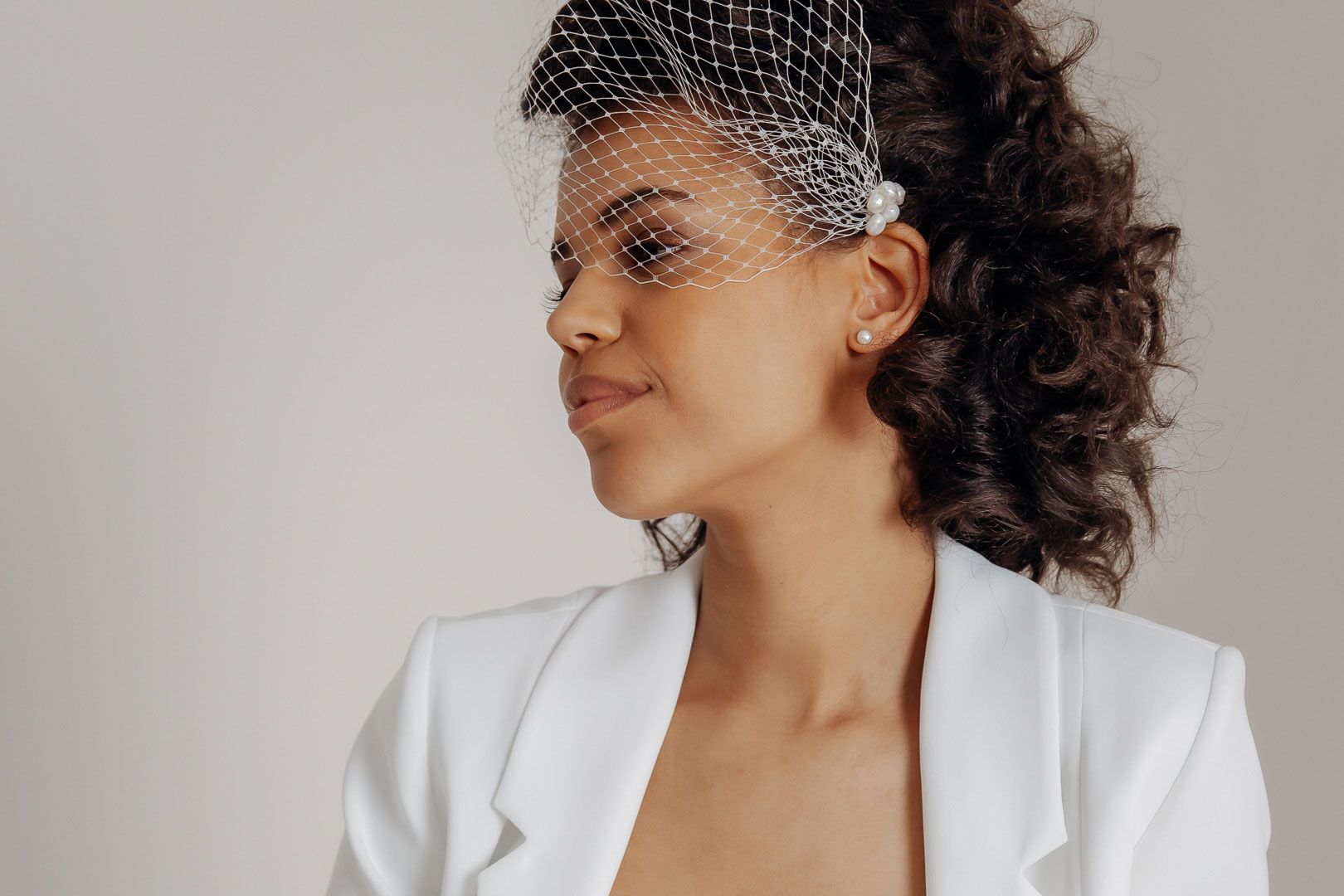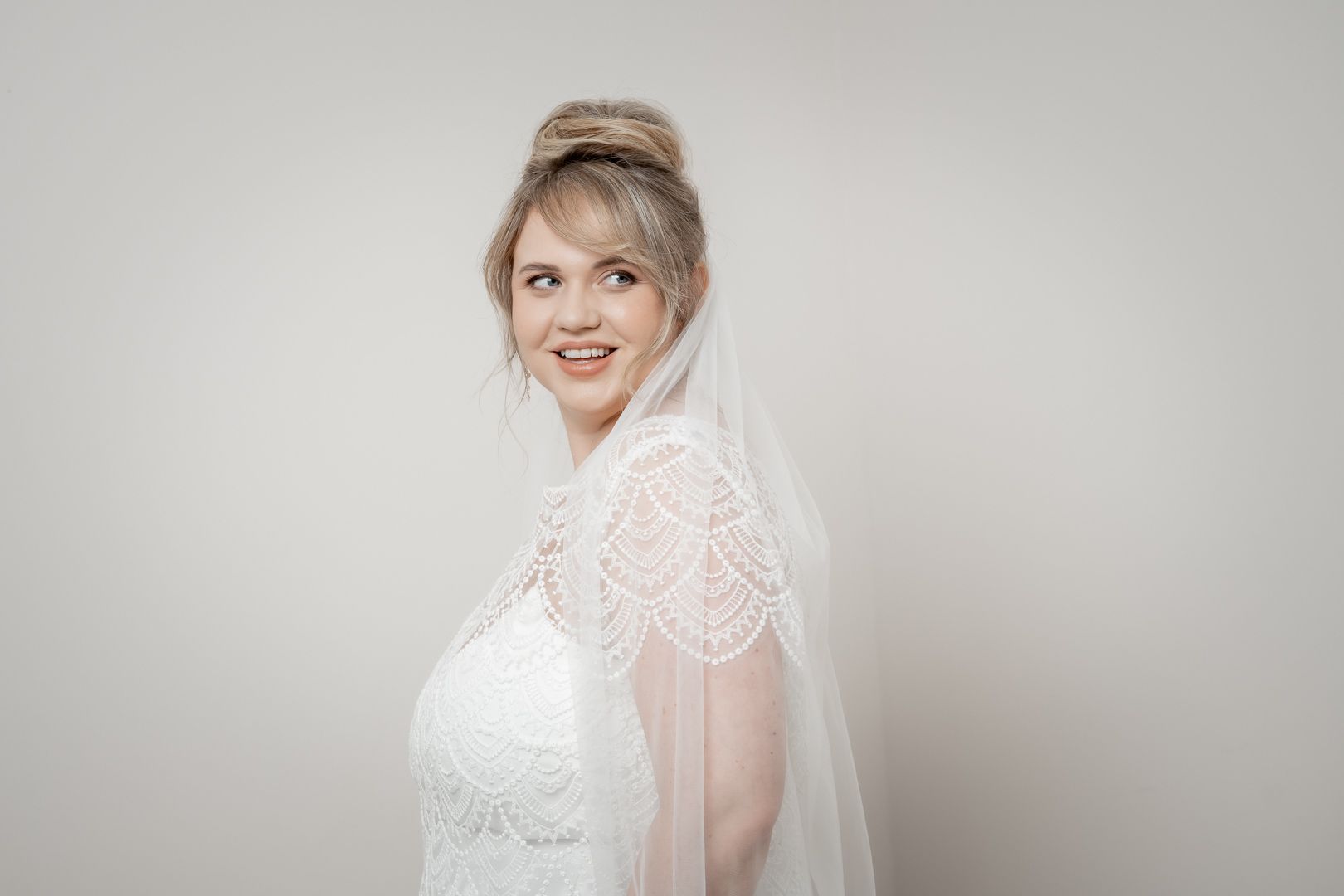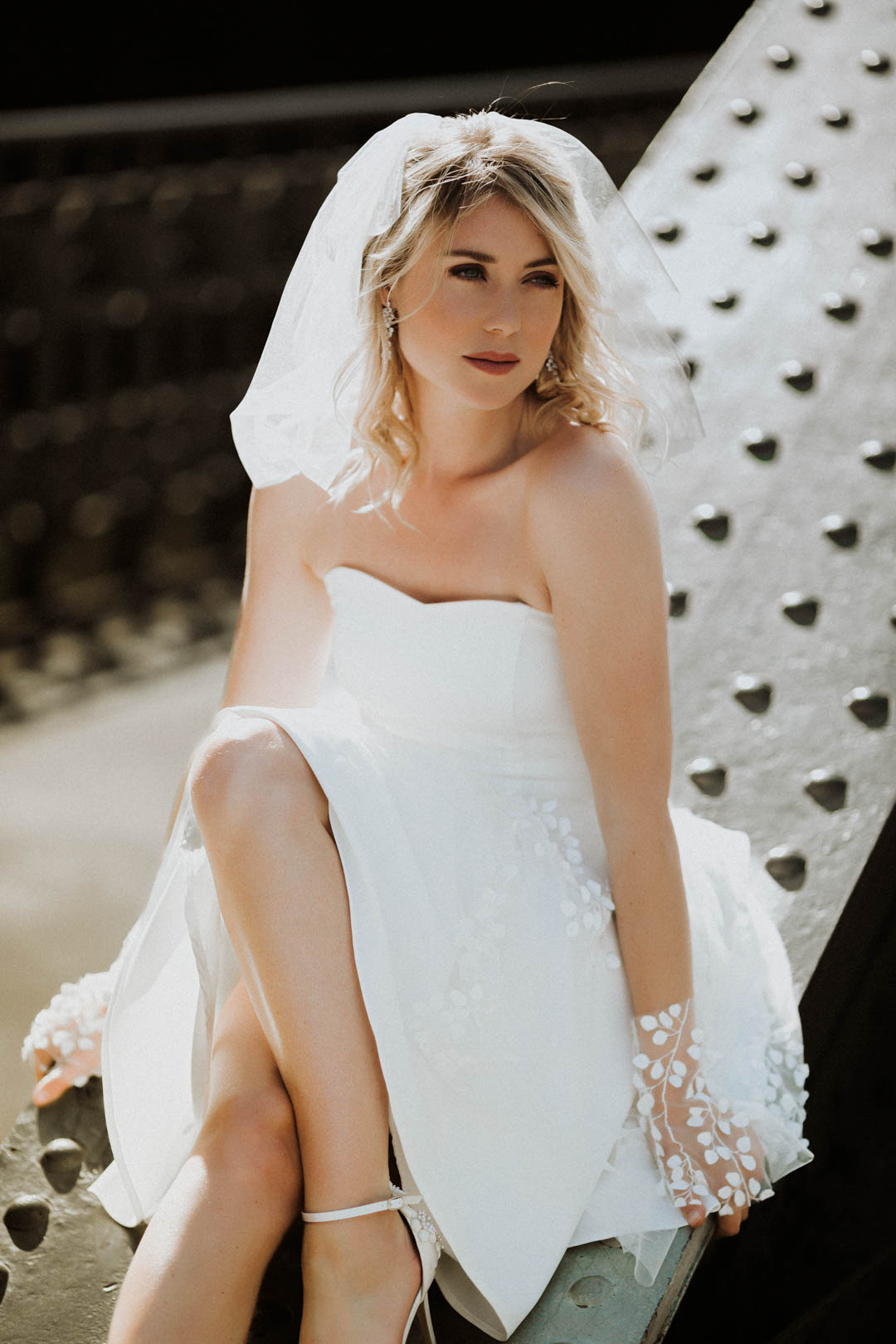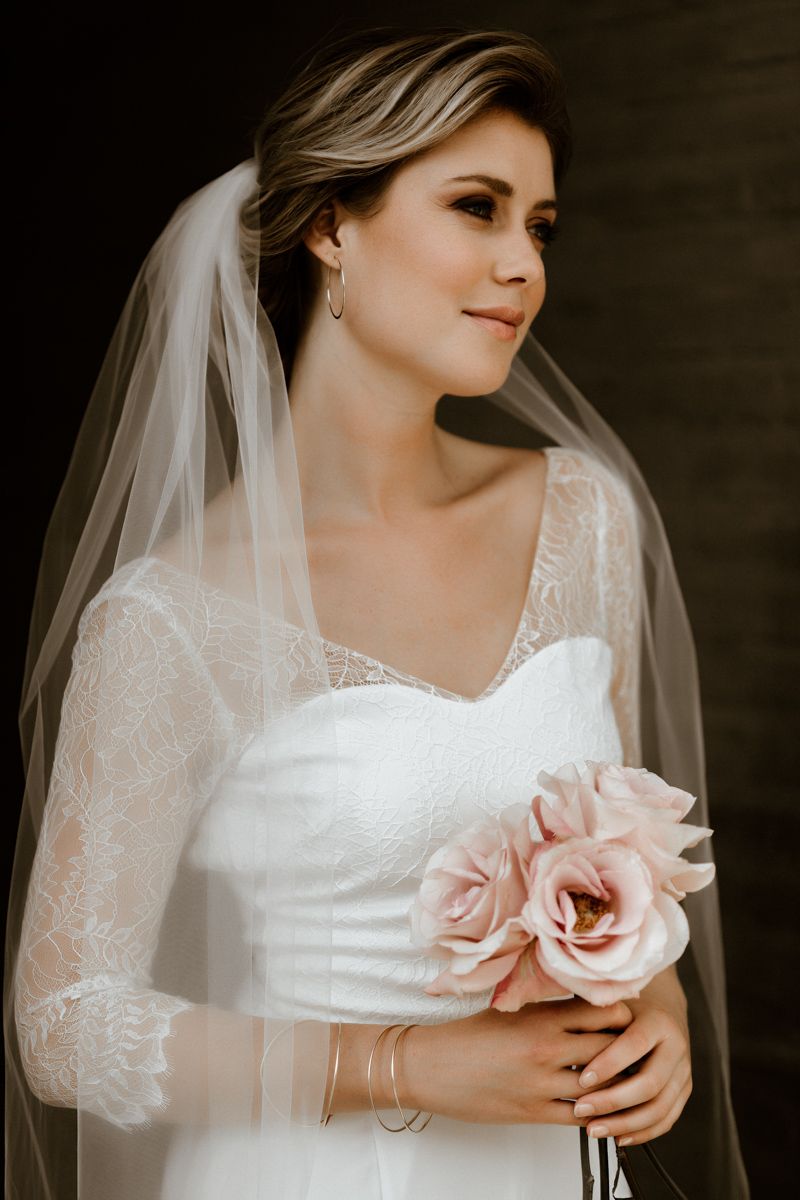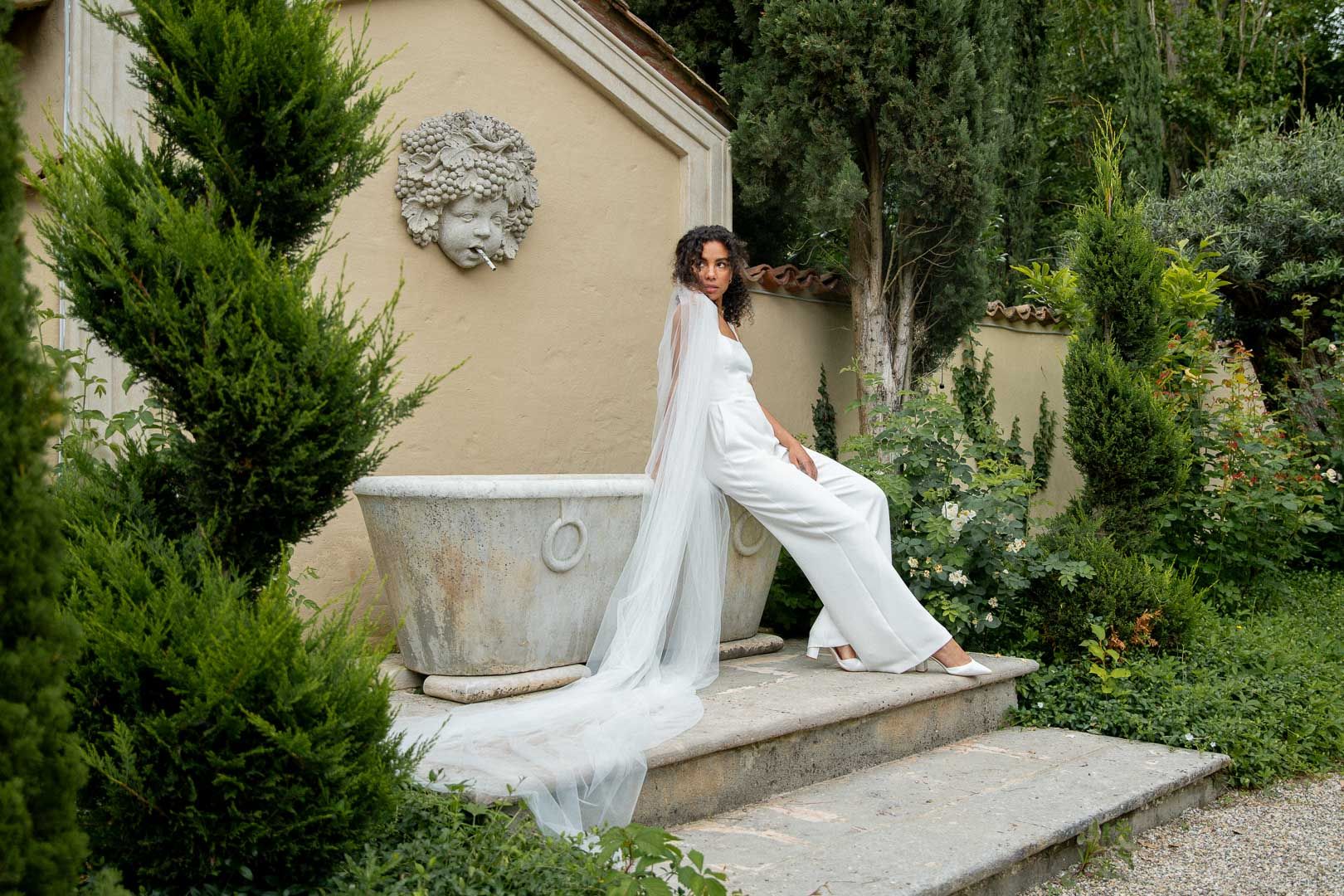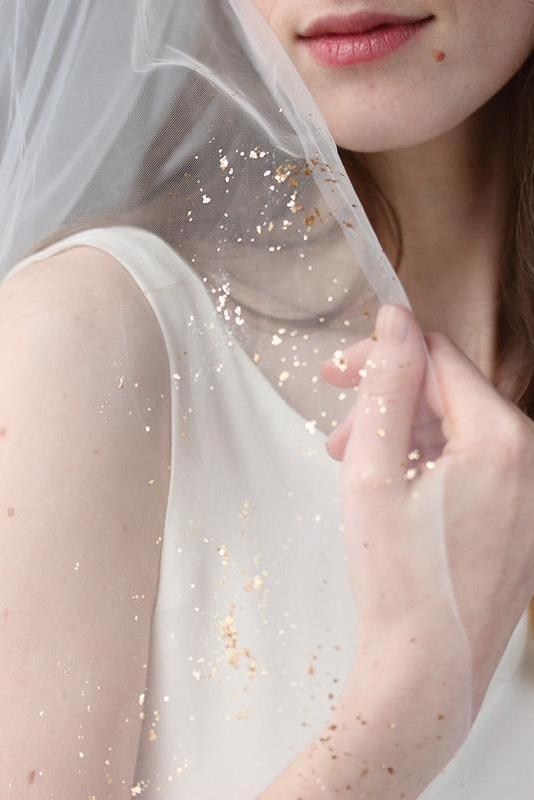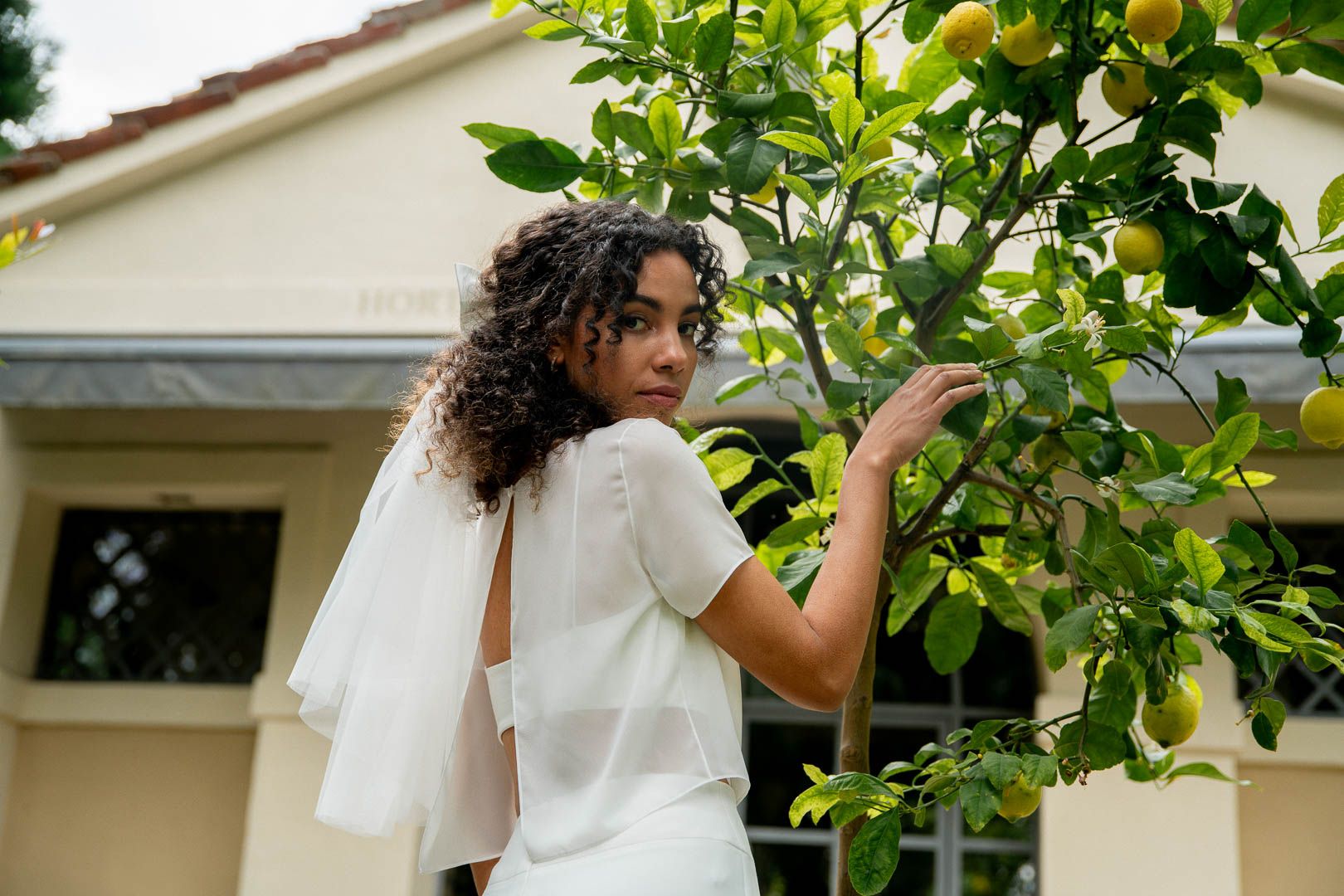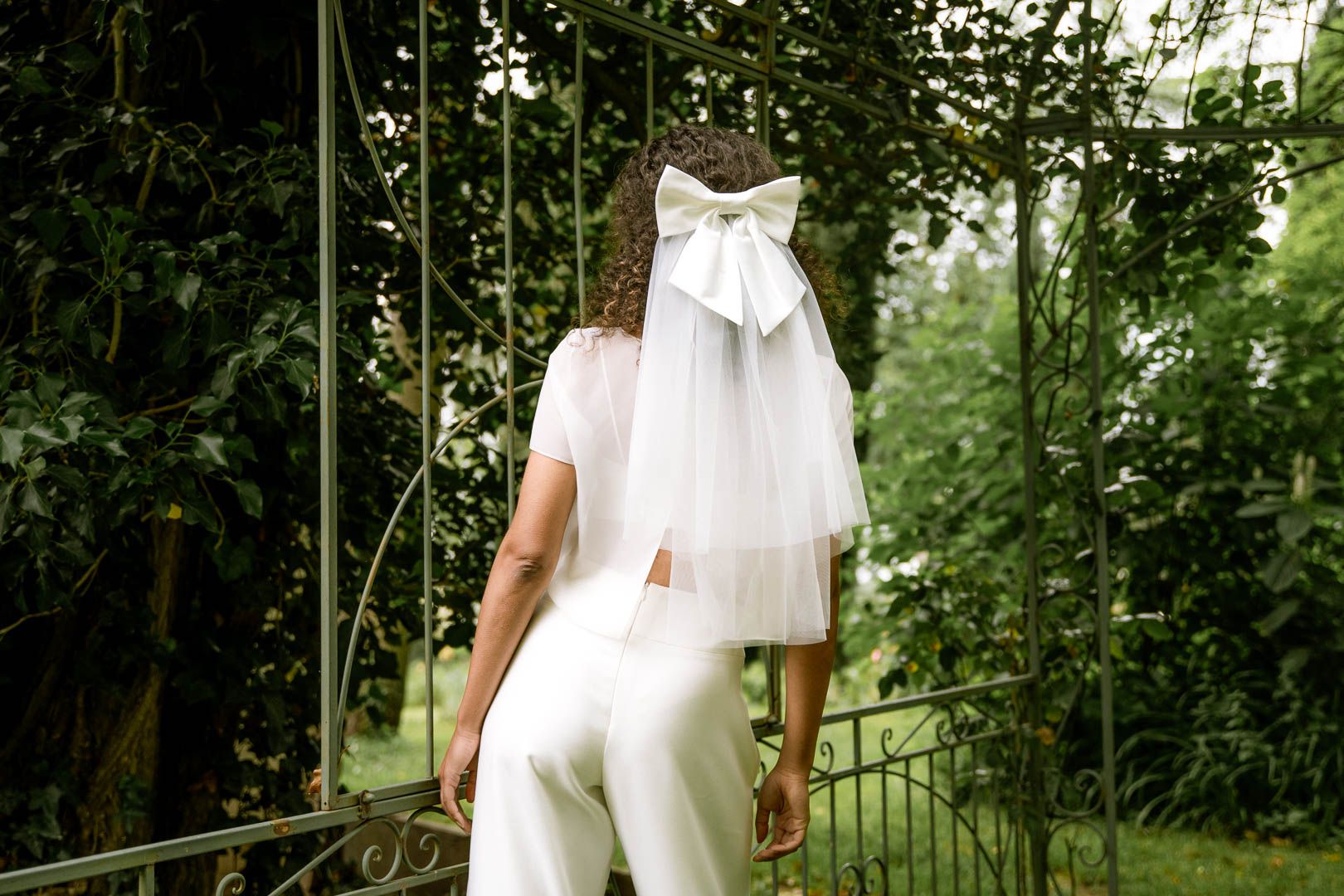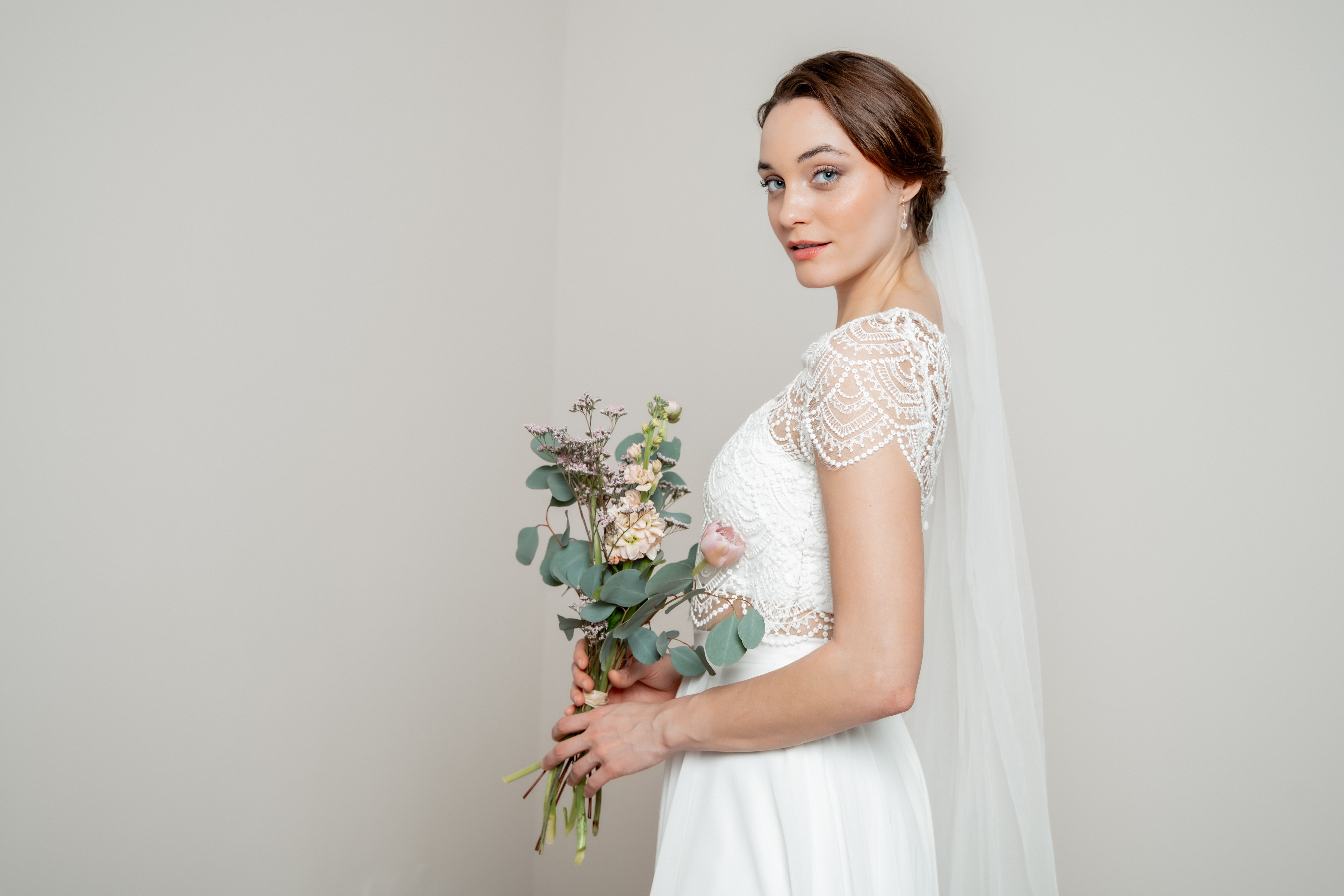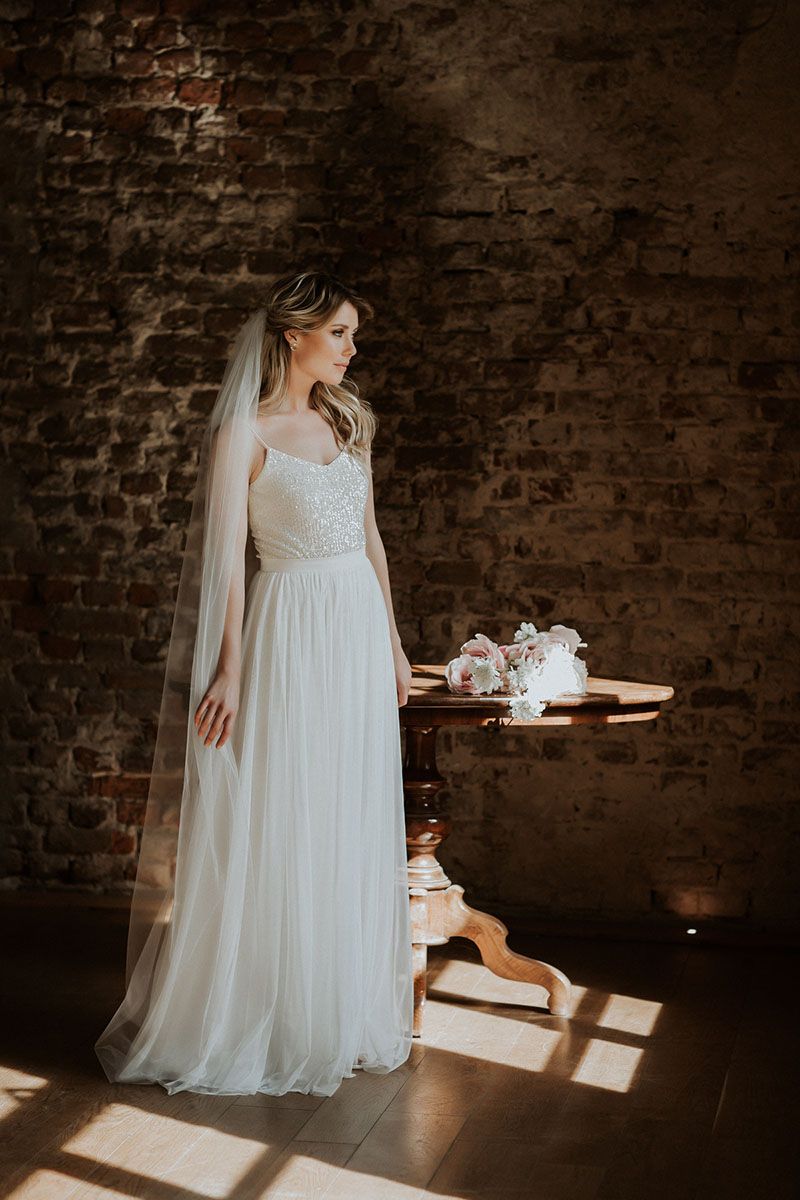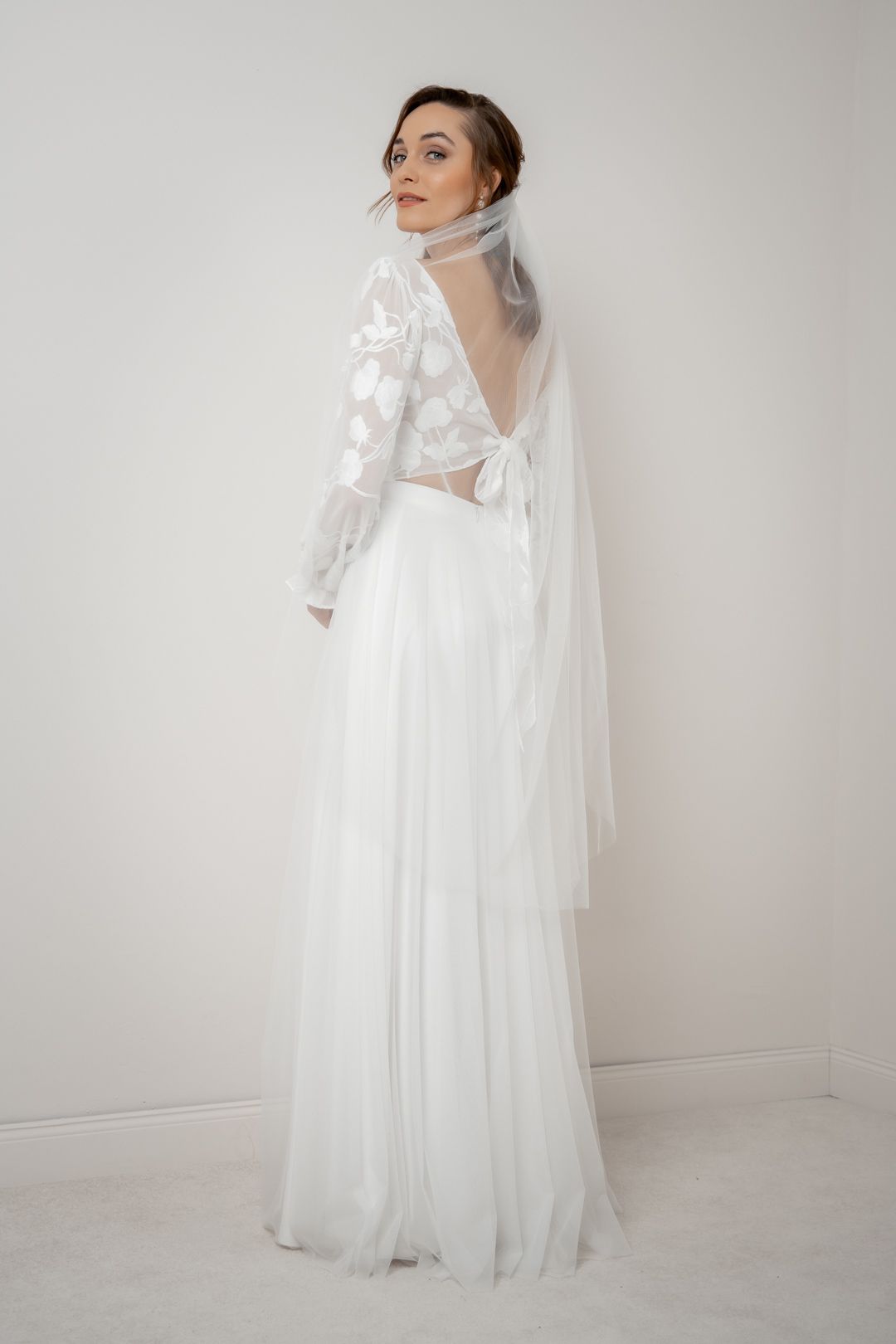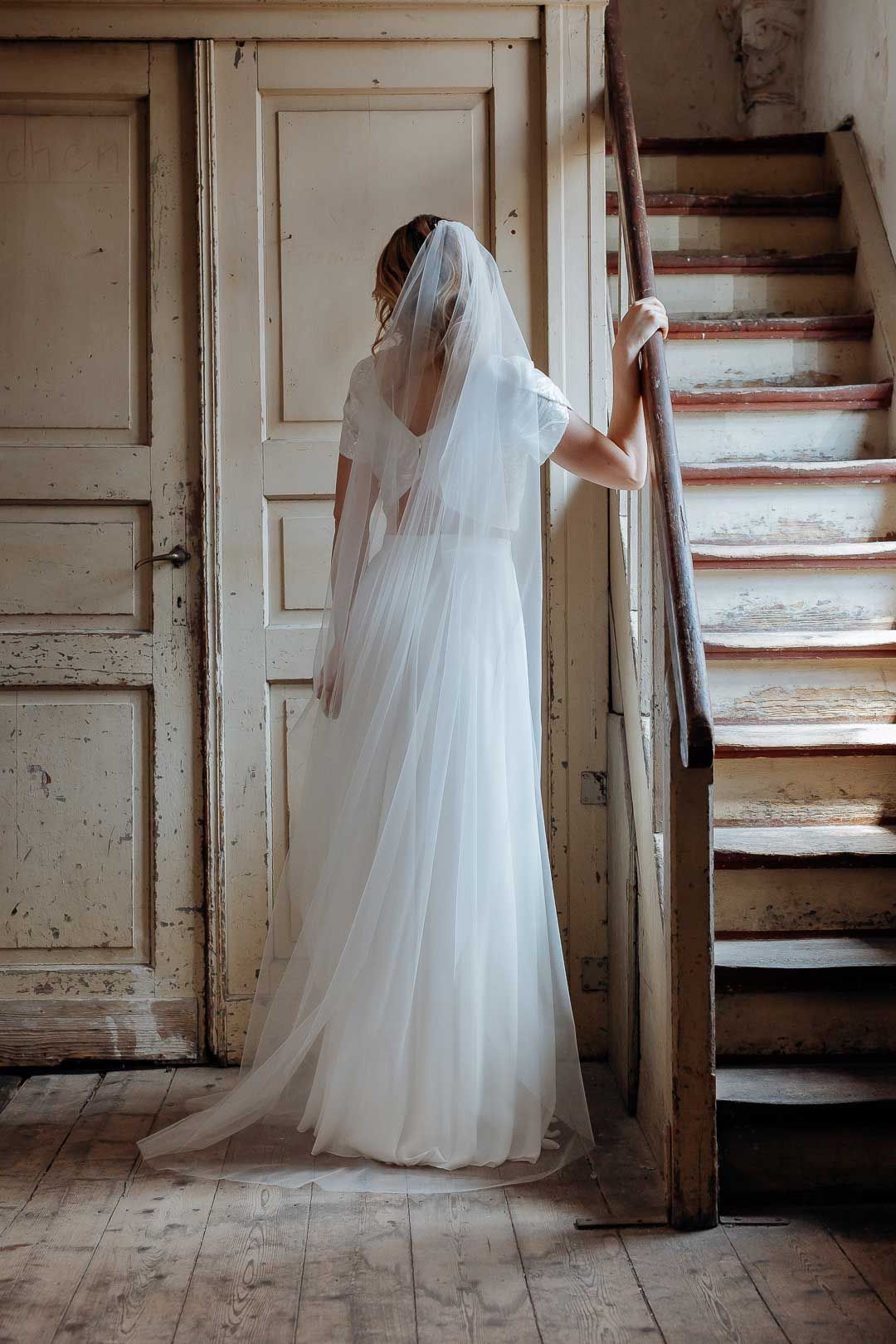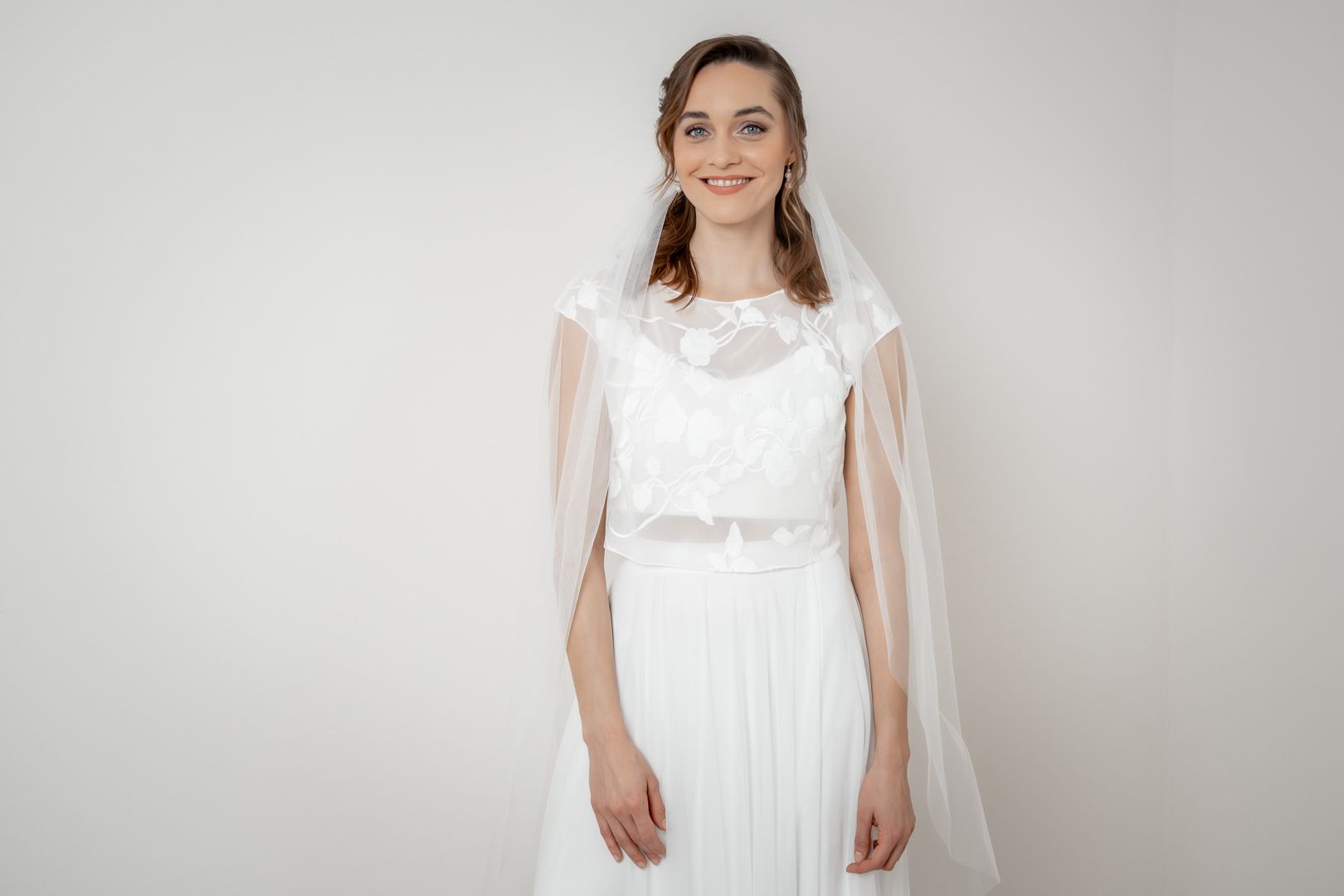Frequently Asked Questions
Veils – History and symbolic meanings
Veils have a long history and symbolic meaning in many cultures and traditions, especially at weddings.
1. Beauty and Purity: The bridal veil was traditionally used to symbolize the purity and innocence of the bride. It was seen as a kind of protective layer, protecting the bride from evil spirits or prying eyes until she was officially married to her spouse.
2. Facial veiling: In some cultures, the bridal veil was also used to obscure the bride's face until the moment of marriage. This could be seen as a sign of humility or a symbolic gesture that the bride is now changing her status and stepping into the role of a wife.
3. Romance and tradition: The bridal veil also has romantic and traditional meaning. Many brides choose a veil to enhance the feeling of romance and elegance associated with a wedding. The moment the groom lifts his veil to see his bride's face is often an emotional highlight of the ceremony.
4. Symbol of Marriage: The bridal veil can also be seen as a symbol of the unity and bond between the bride and groom. When the groom lifts his bride's veil, it often symbolizes the moment when the two partners officially come together and begin their marriage.
5. Fashion and Style: Aside from its symbolic meaning, the bridal veil is often worn for aesthetic reasons. It completes the bridal outfit and adds an extra layer of beauty and elegance.
In this day and age, many brides still choose a veil as part of their wedding ensemble, whether for traditional, symbolic or purely aesthetic reasons.
What types of veils are there?
There are a variety of bridal veils to choose from depending on personal style, preferences and wedding theme. Here are some of the most common types of veils:
Cathedral Veil: This is a long veil that often touches the ground and sometimes even trails behind the bride. It is perfect for formal and traditional weddings as well as church ceremonies.
Elbow Tips: This type of veil extends to the bride's elbow and is a popular choice for brides who prefer a medium length veil. It is versatile and goes well with different wedding dress styles.
Fingertip Length: A fingertip length veil extends to the tip of the bride's fingers. It is a popular choice as it creates an elegant silhouette and works well for both formal and informal weddings.
Shoulder Length: This veil style ends at shoulder height and is ideal for wedding dresses with a shorter or off-the-shoulder silhouette. It adds a subtle touch of romance without distracting from the dress.
Mantilla Veil: The mantilla veil is a traditional Spanish veil made of lace and usually oval in shape. It is often worn with a hair comb and gives the bride a romantic, nostalgic feel.
Blusher Veil: A blusher veil is a short veil that covers the bride's face. It can be withdrawn when the bride is led down the aisle by her father or when the groom lifts the veil to see his bride's face.
Birdcage Veil: This is a short veil that partially covers the bride's face and is often made of mesh or lace material. It adds a touch of vintage charm and is perfect for retro-inspired weddings.
Embellished veils
Bridal veils can have various embellishments and details added to give them a personal touch and match the wedding dress. Here are some common bridal veil embellishments:
Lace: Lace embellishments are very popular and give the veil a romantic and feminine touch. Lace can be applied along the hem, along the edge or even across the entire veil.
Beads and Sequins: Beads and sequins can add sparkle and glamor to the veil. They can be placed along the hem of the veil or in a pattern on the surface of the veil.
Gemstones: Rhinestones or other gemstones can create a sparkling effect on the veil. They can be incorporated into the veil material or applied as separate applications.
Embroidery: Hand-embroidered or machine-made embroidery can add an artistic and individual touch to the veil. Floral patterns, vines or other designs can be used to embellish the veil.
Beaded Strands or Ribbons: Beaded ribbons or strands can be placed along the edge of the veil or in vertical lines to create an elegant effect.
Satin or Silk Ribbons: Satin or silk ribbons can be used along the hem of the veil or as an embellishment along the edges. They give the veil a luxurious and polished look.
Flower appliques: Fabric flowers or lace flowers can be added to the veil to create a romantic and playful look.
Bows or Bows: Bows or bows can be added as an embellishment on the hair comb or along the veil itself to add a sweet and feminine accent.
These embellishments can be used individually or in combination to create a bridal veil that perfectly matches the wedding dress and the bride's style.
Which wedding dresses go best with veils?
A veil can generally match most wedding dresses as long as it is chosen appropriately to complement the style of the dress and complete the bride's overall appearance. Here are some general guidelines for when a veil pairs well with a wedding dress:
Traditional Wedding Dresses: For classic, traditional wedding dresses, such as ball gowns or A-line dresses, longer veils such as cathedral veils or chapel veils often work well. These veils add a formal and elegant touch to the overall appearance.
Romantic Wedding Dresses: Wedding dresses with romantic details like lace, floral appliqués, or soft fabrics can pair well with mid-length veils like elbow-length or fingertip lengths. These veils complement the feminine and playful look of the dress.
Modern Wedding Dresses: For modern wedding dresses with clean lines and minimalist details, shorter veils such as shoulder length or blusher veils often work well. These veils add a contemporary and simple elegance to the look without distracting from the design of the dress.
Vintage-Inspired Wedding Dresses: Vintage-inspired wedding dresses, such as sheath dresses or 1920s flapper-style dresses, often look great with veils in retro styles such as birdcage veils or mantilla veils. These veils add to the nostalgic charm of the dress and complete the bride's vintage look.
Beach or boho wedding dresses: Airy and loose veils such as veils or loosely falling veils made of tulle or chiffon often work well for beach or boho style wedding dresses. These veils complement the relaxed and casual look of the dress and go well with a beach or outdoor wedding.
Ultimately, the choice of veil should be based on what best suits the bride's style and personality, as well as the overall appearance of her wedding dress. It is also important to match the veil with the wedding location, season and other details of the wedding to achieve a harmonious look.










































